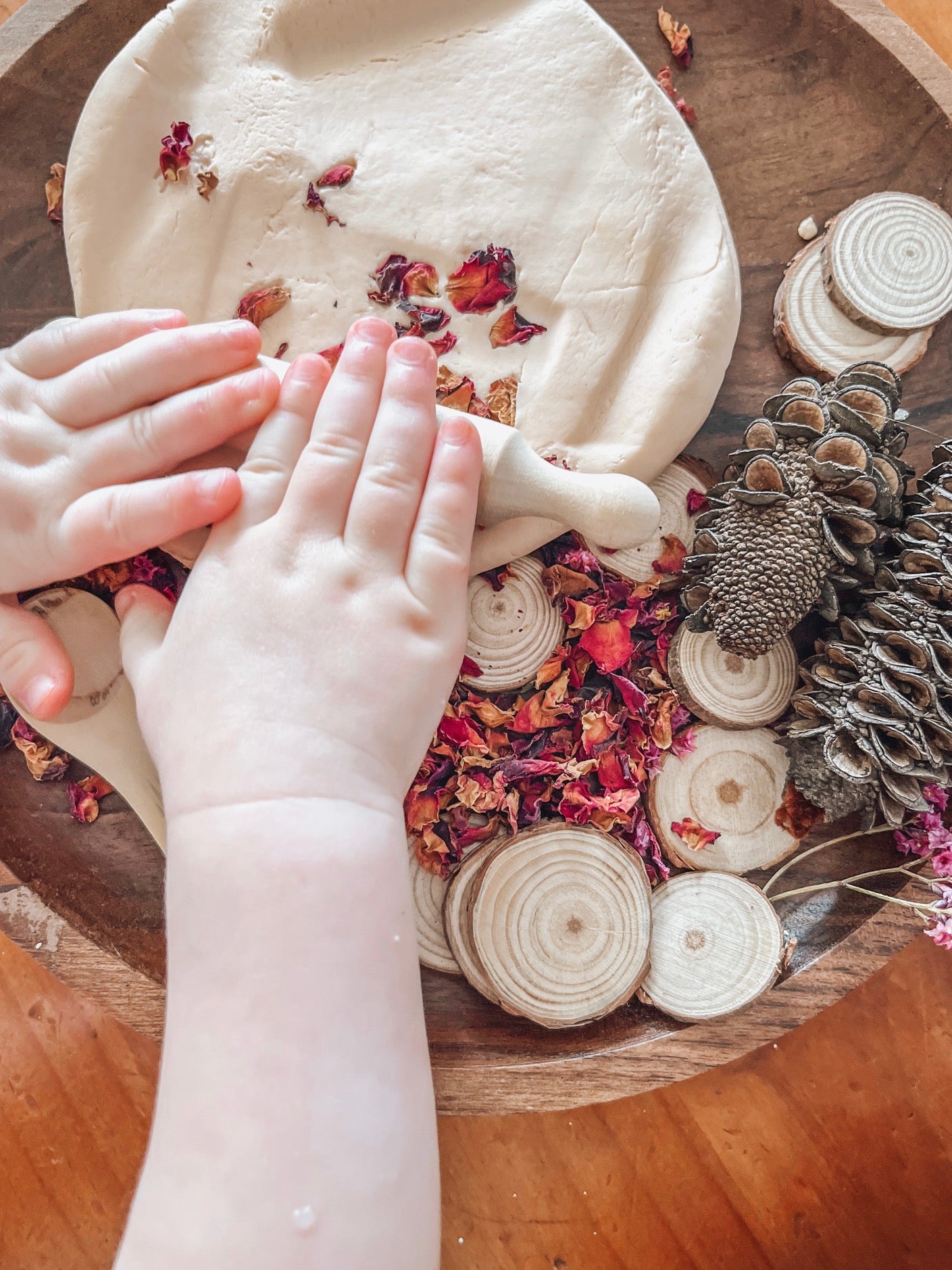
Sensory Play: What, Why And How - By Jessica Lane
Engaging in Sensory Play activities is extremely beneficial for our children. But, what exactly is Sensory Play? Why is Sensory Play so beneficial for our little ones? And how can you provide Sensory Play experiences at home? Read on to find out.
What exactly is Sensory Play?
Sensory Play describes a playful experience that stimulates the senses of the participant. When a baby is born, their senses are not fully developed yet. Each of the senses matures over time as the baby, toddler, or child explores and engages with the world around them. Encouraging this natural urge to explore and enriching this through Sensory Play is what it’s all about!
Our 5 external senses are:
-
Visual- sense of sight
-
Olfactory- sense of smell
-
Gustatory- sense of taste
-
Auditory- sense of sound
-
Tactile- sense of touch
Sometimes referred to as the 6th and 7th senses are the following 2 internal senses:
-
Proprioceptive- sense of movement and balance
-
Vestibular- sense of spatial awareness

Why is Sensory Play so beneficial?
-
Sensory Play assists in building nerve connections in the brain that are fundamental for learning and development. When a child’s senses are stimulated, cognitive growth occurs.
-
Sensory Play provides global developmental benefits for all children:
-
Physical development- fine motor skills, gross motor skills, hand-eye coordination motor planning, spatial awareness, movement, and balance.
-
Social-Emotional development- sharing, cooperation, taking turns, following simple rules
-
Literacy skills- language development, communication, vocabulary building, identifying objects by name, describing different elements, storytelling telling/ retelling.
-
Numeracy skills- counting, patterning, sorting, comparing, ordering, measuring.
-
Scientific skills- questioning, hypothesising, experimenting, problem-solving, reaching conclusions.
-
Sensory Play also encourages positive learning traits including independent thinking, curiosity, imagination and creativity, concentration, perseverance and resilience. Sensory Play also proves to be a
-
calming and mindful experiences for our little ones.
Sensory Play at Home
The most simple activities can work perfectly to stimulate your little one’s senses. One of the most prevalent ways to encourage Sensory Play and exploration is with a Sensory Play Tray. Let’s explore that concept!
Trays- There are many, many trays to choose from, of varying shapes and sizes. Choose a tray that is large enough to allow room for your child/children to engage with and manipulate the contents easily. A tray with a high edge is a good idea to help contain the contents during play. Large round trays are my go-to, but any shape would work. Metal, plastic, wood or enamel trays are all great
options as they are readily available and easy to clean.
Bases- The options for sensory bases are plentiful. Choose 1 or a combination of 2/3 complementary bases to fill your tray with. You can use bases that don’t need any preparation at all including water, sand, dirt or mud, a play silk, scarf or coloured gems, beads or buttons. Packets of dried lentils, chickpeas, rice, pasta and salt are also great options that can be used straight from the packet or are easily coloured with paint or a mixture of food colouring and vinegar. You might decide to purchase sensory bases that are already coloured, scented or can be prepared quickly and easily. Some examples are playdough, water beads, ice cubes, jelly, kinetic or cotton sand, paint, fizzes, flurries, snow, slime or foam.
Additional Elements- Children love exploring sensory bases on their own using their fingers, hands and even feet. I am often telling my little ones to ‘Just wait for a second’ while adding a few additional resources to encourage engagement with and exploration of the sensory bases chosen. Some of our favourite additional elements for sensory play are scoops, spoons, cups, tongs, animal figurines, shape cutters, stampers, rollers and loose parts!!
Time to Play- There is no right or wrong way to engage with a Sensory Play Tray. You may observe scooping of rice, pouring of lentils, transferring of gemstones from one cup to another, splashing of water, rolling of playdough, movement of figurines, use of tools or little fingers poking, pinching and grasping. Playing alongside your child is a wonderful experience for both parent and child and gives opportunities for modelling how different tools are used, talking about the experience with each other and encouraging those hesitant participants. But essentially, let your child lead the way!
Tips and Tricks
You may choose to theme your Play Tray-based on your child’s current interests.
Use a messy mat underneath your Play Tray for a quick clean-up.
Provide a smock or old shirt to wear during messy play.
Establish boundaries- our only rule during sensory play is to try and keep the elements in the tray, a little on the messy mat is ok too. Alternatively, set your play up where you can easily sweep up or hose down
Afterwards:
Have baby wipes or a towel handy for cleaning up little hands after playing.
If need be, send them straight to the bath!
Save and store dry sensory bases to play with again.
Separate dry sensory bases using a colander and store.
Rinse and dry elements and trays for reuse.
Happy Sensory Playing!!
Authored by Jessica Lane of @mummy_lane


Leave a comment